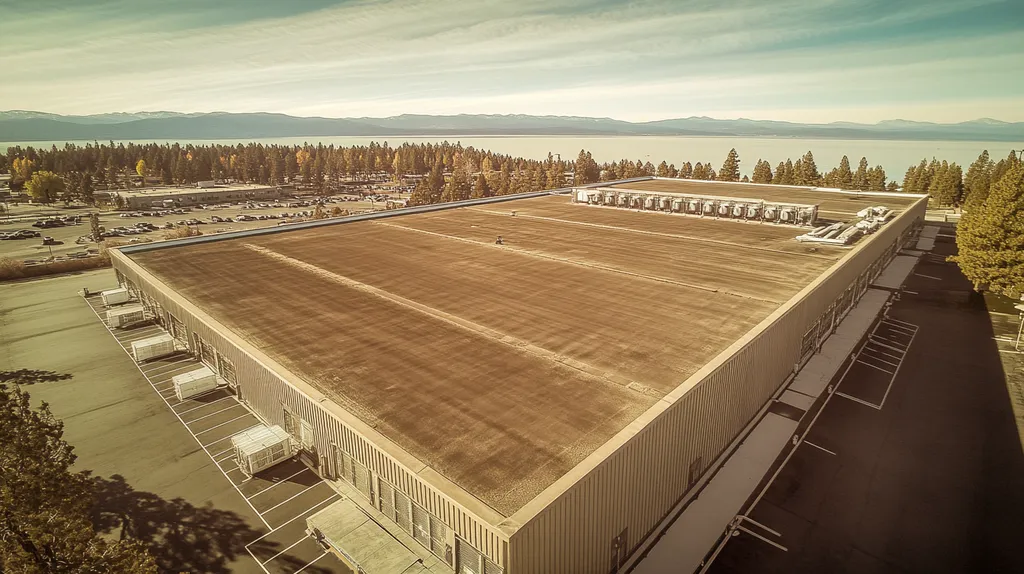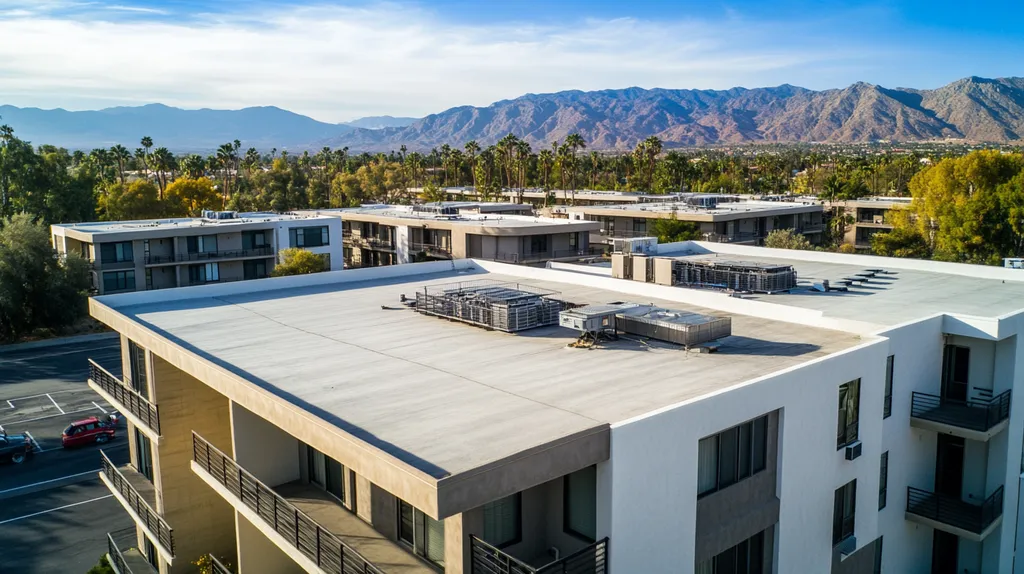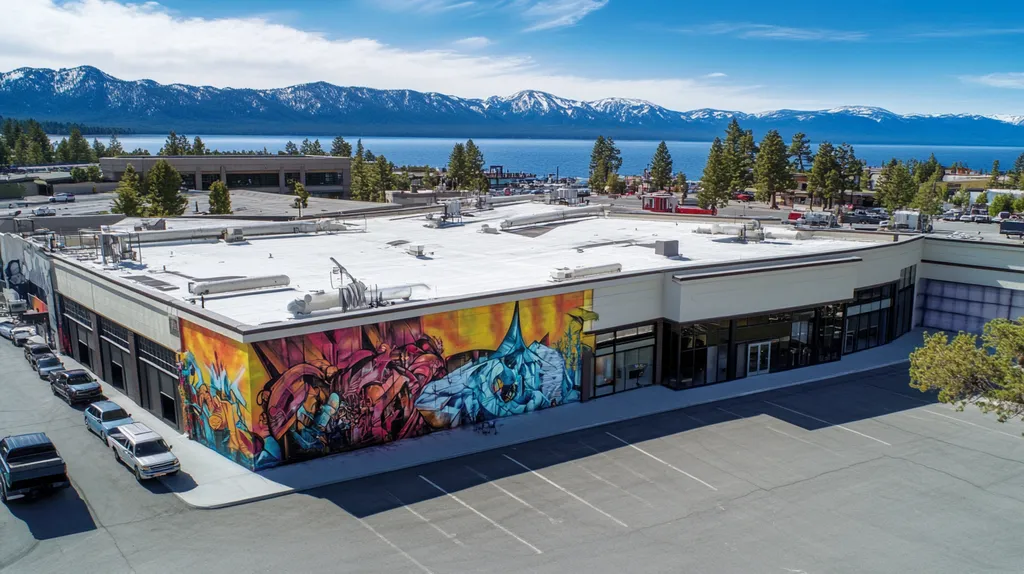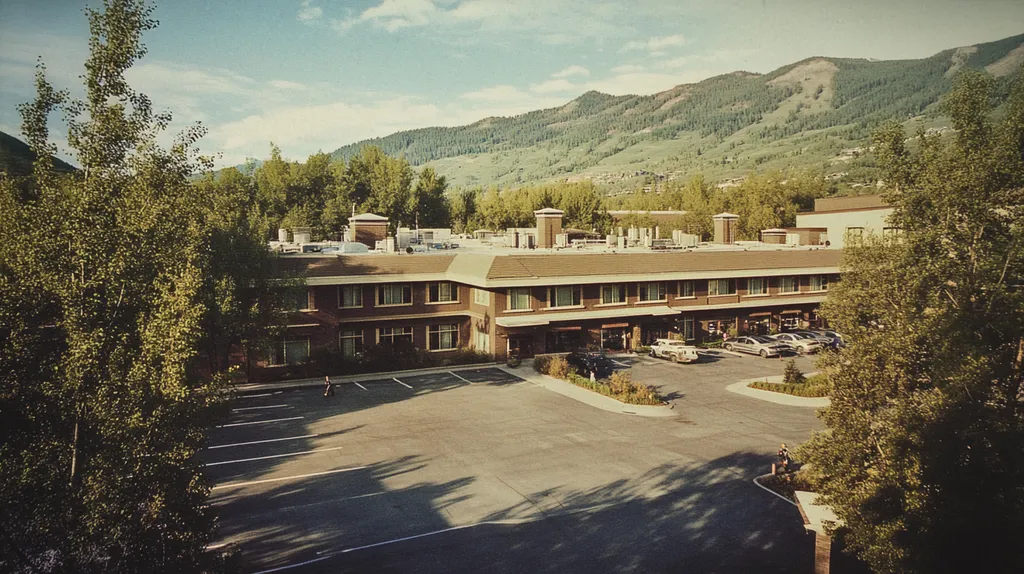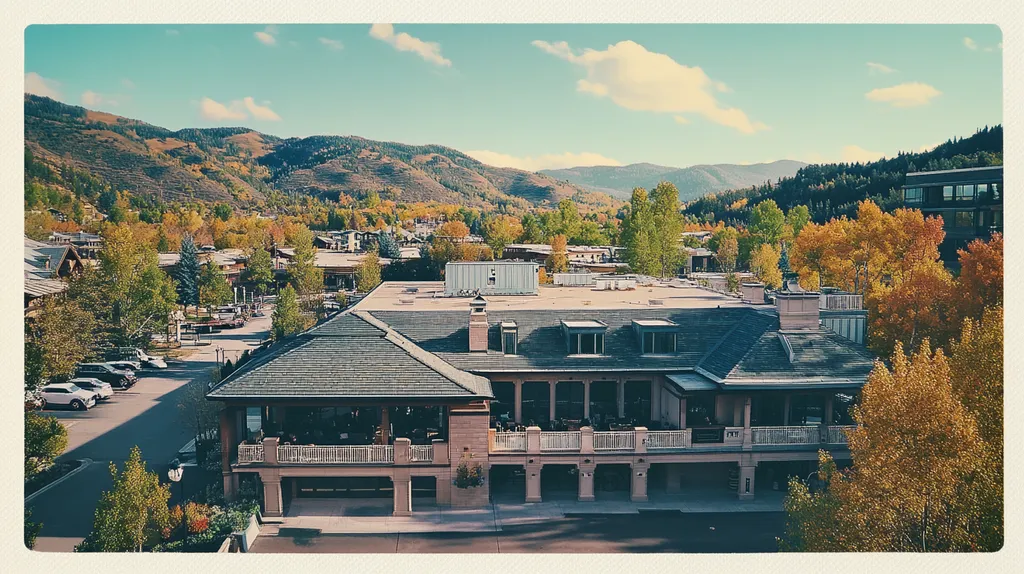Welcome to today’s Battle Royale featuring two roofing heavyweights: “Sedum Green Roofs” in the east corner versus “Modular Green Roof Systems” in the west!
Tonight’s showdown pits these contenders against each other across six punishing rounds designed to test every aspect of their performance for Environmental Benefits of a Green Commercial Roof.
At stake? Millions in potential costs, decades of building protection, and the critical performance demands of modern commercial and industrial facilities.
Our professional judging panel will evaluate each round on technical merit, real-world performance, and value delivery. After all six rounds, we’ll declare our ultimate champion.
Ladies and gentlemen, facility managers and building owners… it’s time to rumble!
ROUND 1: INITIAL COSTS & INSTALLATION
For commercial property owners, choosing between sedum and modular green roofs isn’t just about going green – it’s about protecting their bottom line. With installation costs ranging from $10 to $30 per square foot, getting this decision wrong can turn a sustainability initiative into a financial sinkhole. The stakes are especially high given that proper installation directly impacts the system’s longevity and environmental performance.
Material Expenses
Green roofs can significantly extend the lifespan of waterproofing membranes and HVAC systems while incorporating recycled materials in their growing medium. This dual benefit of sustainability and durability makes the initial investment more justifiable for both options. (source: Green Roofs Organization)
Sedum green roofs typically require $12-18 per square foot in materials, including specialized growing medium, drainage layers, and root barriers. The vegetation itself is relatively inexpensive, but the supporting infrastructure adds considerable cost.
Modular systems command $18-25 per square foot for materials, primarily due to their engineered trays and pre-grown plant modules. While these components cost more upfront, they eliminate many traditional installation materials.
Given the lower material costs, sedum green roofs claim the “ADVANTAGE” in this category.
Installation Complexity
Installing a sedum green roof requires precise layering of multiple components – waterproofing, root barriers, drainage mats, growing medium, and carefully placed vegetation. This complexity demands specialized expertise and equipment.
The process typically involves multiple contractors and careful coordination, increasing the risk of delays and complications. Even minor mistakes during installation can lead to significant issues down the line.
Modular systems arrive as pre-engineered units that simply lock together, dramatically reducing installation complexity. This plug-and-play approach minimizes the chance of errors and requires less specialized training.
For installation complexity, modular systems earn a clear “ADVANTAGE.”
Project Timeline
Traditional sedum roof installations often stretch across weeks or even months, depending on weather conditions and crew availability. The multi-layer installation process can’t be rushed without compromising quality.
Plant establishment adds another 3-6 months before the roof achieves full coverage and environmental benefits. This extended timeline increases exposure to weather risks during installation.
Modular systems can typically be installed in days rather than weeks, with pre-grown plants providing immediate coverage. This rapid deployment minimizes disruption to building operations and accelerates environmental benefits.
The significantly faster timeline gives modular systems another clear “ADVANTAGE.”
ROUND 1 WINNER: Modular Green Roof Systems
ROUND 2: DURABILITY & LIFESPAN
When a commercial roof fails prematurely, it’s not just the building owner who pays the price – it’s the environment. Every replaced roof adds approximately 10 tons of waste per 10,000 square feet to already overflowing landfills. The stakes couldn’t be higher: choosing between sedum and modular systems isn’t just about immediate performance, it’s about long-term environmental impact.
Weather Resistance
Green roofs can retain up to 90% of summer precipitation and 40% of winter precipitation, significantly reducing stormwater runoff while filtering pollutants and extending membrane life. This natural protection system shields the underlying structure from UV damage and extreme temperature fluctuations. (source: Green Roofs for Healthy Cities)
Sedum green roofs excel at weather resistance through their natural adaptability. These hardy plants form a living shield that self-repairs and thrives in harsh conditions, from prolonged drought to heavy rainfall.
Modular systems offer good weather protection but can be vulnerable at their connection points. While individual modules are highly durable, the joints between them can create potential weak spots during extreme weather events.
For weather resistance, sedum green roofs claim the “ADVANTAGE.”
Structural Integrity
The weight distribution of roofing components plays a crucial role in long-term performance. Excessive point loads or uneven stress patterns can compromise even the most robust waterproofing systems.
Sedum green roofs provide consistent weight distribution across the entire roof surface. Their continuous growing medium spreads loads evenly, reducing stress on the underlying structure.
Modular systems concentrate weight at specific points where modules connect. While engineered to handle these loads, this inherent design characteristic can create more stress points than traditional continuous systems.
Sedum green roofs earn another clear “ADVANTAGE” for structural integrity.
Replacement Requirements
The frequency and scope of necessary replacements directly impact both maintenance costs and environmental footprint. Every component replacement generates waste and requires new resources.
Sedum green roofs typically need minimal component replacement over their lifespan. When maintenance is required, it usually involves spot repairs rather than wholesale replacement.
Modular systems offer the benefit of easy section replacement without disturbing the entire roof. However, their engineered components may require more frequent updates as materials age.
The systems achieve a “TIE” in replacement requirements, as each offers distinct advantages in this category.
ROUND 2 WINNER: Sedum Green Roofs
ROUND 3: PERFORMANCE FACTORS
Every kilowatt saved and gallon of stormwater managed translates directly to environmental impact and operational costs. With urban areas facing increasing climate pressures, choosing the right green roof system can mean the difference between meaningful environmental benefits and mere greenwashing. Property owners need to understand how these systems perform in real-world conditions before making a six-figure commitment.
Energy Efficiency
A properly designed green roof can slash HVAC costs by up to 25% through improved insulation and heat reflection. The choice between sedum and modular systems significantly impacts these potential savings.
Sedum green roofs create a continuous, living insulation layer that adapts to seasonal changes. Their dense coverage and natural evaporative cooling provide consistent thermal performance year-round.
Modular systems leave small gaps between units that can create thermal bridges, reducing overall efficiency. While individual modules provide good insulation, the system’s segmented nature limits its thermal performance.
For energy efficiency, sedum green roofs claim the “ADVANTAGE.”
Stormwater Management
Green roofs can retain 70-90% of summer precipitation and 25-40% in winter, significantly reducing urban runoff while filtering pollutants. This capacity helps buildings meet increasingly strict stormwater regulations while protecting local watersheds. (source: Green Roofs)
Sedum green roofs offer consistent but limited water retention due to their shallow growing medium. Their simplified design prioritizes lightweight performance over maximum water management.
Modular systems can be configured with deeper soil profiles and specialized retention layers. Their adaptable design allows for enhanced water storage and controlled release rates.
Modular systems earn the “ADVANTAGE” in stormwater management.
Urban Biodiversity
Green roofs can transform barren rooftops into thriving ecosystems that support local wildlife and strengthen urban biodiversity corridors. The right system choice determines whether a roof becomes a biological desert or an ecological oasis.
Sedum green roofs typically support limited species diversity, focusing on drought-tolerant plants. While reliable, they offer minimal habitat value for local wildlife.
Modular systems can accommodate varied soil depths and plant species, creating diverse microhabitats. Their flexible design supports native plants and provides better wildlife habitat opportunities.
The superior habitat potential gives modular systems the “ADVANTAGE.”
ROUND 3 WINNER: Modular Green Roof Systems
ROUND 4: MAINTENANCE REQUIREMENTS
Poor maintenance threatens more than just individual buildings – it undermines the entire green roof movement. When promised environmental benefits fail to materialize due to neglect, it fuels skepticism about sustainable construction. With maintenance costs ranging from $0.50 to $2.00 per square foot annually, getting this decision wrong creates a ripple effect of wasted resources and missed opportunities.
Routine Care Requirements
Green roofs reduce urban heat islands through daily dew and evaporation cycles while capturing airborne pollutants and filtering noxious gases. These environmental benefits directly depend on consistent maintenance to remain effective. (source: Green Roofs for Healthy Cities)
Sedum green roofs require minimal routine care beyond quarterly inspections and occasional weeding. Their drought-resistant nature eliminates most irrigation needs outside establishment periods.
Modular systems demand monthly inspections of individual trays and connection points. Their segmented design creates more potential failure points requiring regular monitoring.
For routine care requirements, sedum green roofs claim the “ADVANTAGE.”
Specialized Expertise
Professional maintenance expertise directly impacts both cost and environmental performance. Improper care can transform a green roof from an asset into a liability.
Sedum green roofs require basic horticultural knowledge focused on drought-tolerant species. Most maintenance tasks can be handled by general landscape crews with minimal specialized training.
Modular systems often need technicians familiar with their specific components and connection systems. This specialized expertise comes at a premium and may not be readily available in all markets.
The lower expertise requirements give sedum green roofs another clear “ADVANTAGE.”
Emergency Response
When issues arise, the speed and complexity of repairs directly impact both building protection and operational disruption. Even minor problems can escalate quickly without proper response protocols.
Sedum green roofs allow quick access to any area requiring attention. Their continuous design means repairs can usually be completed with minimal disruption to surrounding areas.
Modular systems excel at isolation and replacement of problem sections. Individual modules can be swapped without disturbing adjacent units, though replacement components must match exactly.
The systems achieve a “TIE” in emergency response capabilities.
ROUND 4 WINNER: Sedum Green Roofs
ROUND 5: SUSTAINABILITY CREDENTIALS
In an era of escalating climate crisis, the environmental impact of commercial roofing choices has never been more critical. Buildings generate nearly 40% of annual global CO2 emissions, with roofing systems playing a pivotal role in either contributing to or mitigating this impact. The stakes extend beyond individual buildings to affect entire urban ecosystems.
Carbon Footprint Reduction
Carbon reduction capabilities directly impact a building’s contribution to climate change. Modern green roofs must maximize their carbon sequestration potential while minimizing embodied carbon in their components.
Sedum green roofs offer consistent carbon absorption through their extensive plant coverage. Their simplified structure requires fewer manufactured components, reducing embodied carbon in the installation process.
Modular systems support diverse plant species that can capture more carbon than sedum alone. However, their manufactured components carry higher embodied carbon costs that partially offset these gains.
The natural approach gives sedum green roofs the “ADVANTAGE” in carbon reduction.
Energy Conservation
Studies show that green roofs can slash upper floor energy demand by 20% through improved cooling efficiency. The impact extends beyond individual buildings to help combat urban heat island effects. (source: Livingroofs.org)
Sedum green roofs create a continuous insulation layer that maintains consistent performance. Their extensive coverage provides reliable temperature regulation without mechanical components.
Modular systems offer customizable insulation layers but can develop thermal bridges at connection points. While individual modules perform well, the segmented design reduces overall efficiency.
For energy conservation, sedum green roofs claim the “ADVANTAGE.”
Environmental Integration
The ability to support local ecosystems and enhance biodiversity determines whether a green roof truly benefits its environment. Successful integration requires more than just adding plants to a roof.
Sedum green roofs provide limited habitat diversity due to their focus on drought-resistant species. While stable, they offer minimal support for local wildlife and pollinators.
Modular systems can incorporate varied soil depths and native plant species. Their adaptable design creates diverse microhabitats that better support local ecosystems.
The superior ecosystem support gives modular systems the “ADVANTAGE.”
ROUND 5 WINNER: Sedum Green Roofs
ROUND 6: SPECIALIZED APPLICATIONS
As cities grapple with rising temperatures and stormwater mandates, choosing the wrong green roof for specialized applications can negate millions in environmental benefits. With urban heat islands intensifying and infrastructure straining under climate pressures, the stakes have never been higher. Property owners must navigate complex technical requirements while ensuring their investment delivers meaningful environmental impact.
Urban Heat Island Mitigation
Cities are warming twice as fast as surrounding areas, making heat island reduction a critical priority. Studies by Livingroofs.org demonstrate that green roofs can reduce upper floor energy demand by 20% through improved cooling efficiency, translating to fuel savings of 2 liters per square meter annually. (source: Livingroofs.org)
Sedum green roofs create consistent coverage that maximizes cooling through evapotranspiration. Their shallow profile allows for widespread deployment across existing structures without major modifications.
Modular systems offer deeper soil profiles that enhance cooling potential but limit coverage due to weight restrictions. While individual modules perform well, gaps between units reduce overall cooling efficiency.
For urban heat mitigation, sedum green roofs claim the “ADVANTAGE.”
Retrofit Applications
Adapting existing buildings for green roof installation presents unique structural and logistical challenges. Every pound of added weight reduces options for environmental enhancement.
Sedum green roofs excel in retrofit scenarios due to their lightweight design and flexible installation requirements. Their continuous nature allows them to conform to irregular roof shapes while minimizing structural impacts.
Modular systems often require additional structural reinforcement that may be impractical for older buildings. Their rigid geometries can also create challenges when working around existing roof penetrations.
The superior adaptability gives sedum green roofs the “ADVANTAGE.”
High-Wind Zones
Coastal and high-rise applications demand systems that can withstand extreme wind conditions without compromising environmental performance. Even minor displacement can cascade into major failures.
Sedum green roofs maintain integrity through their integrated design and low profile. Their widespread root systems create natural anchoring that resists wind uplift.
Modular systems can be vulnerable to wind forces at their connection points. While individual modules are secure, the joints between them create potential failure points during extreme events.
For wind resistance, sedum green roofs earn another clear “ADVANTAGE.”
ROUND 6 WINNER: Sedum Green Roofs
AND THE WINNER IS…
After six grueling rounds of technical analysis and environmental performance testing, we have our verdict!
With four rounds to two, SEDUM GREEN ROOFS claims the championship belt in this heavyweight battle for rooftop supremacy!
The champion dominated with superior weather resistance, structural integrity, energy efficiency, and maintenance simplicity. Its continuous design and natural adaptability proved unbeatable in specialized applications, particularly for retrofit projects and high-wind zones.
But don’t count out our worthy challenger! Modular Green Roof Systems showed impressive strength in stormwater management, biodiversity support, and rapid installation. For properties prioritizing quick deployment or maximum habitat creation, these systems remain strong contenders.
IMPORTANT NOTICE: This analysis reflects general performance patterns, but every building faces unique challenges. Local climate, structural capacity, and specific property requirements can significantly impact system selection. Building owners should always consult qualified professionals who can evaluate their precise situation and requirements.
Ladies and gentlemen, whether you back the champ or the challenger, remember: in the high-stakes arena of commercial roofing, victory goes to those who match their specific building needs with the right contender’s strengths. Choose wisely – millions in operational costs and decades of environmental impact hang in the balance!
FREQUENTLY ASKED QUESTIONS
Q. What are the initial costs of a commercial roof?
A. Initial costs for green roofs can range from $10 to $30 per square foot. Sedum roofs often cost between $12-18, while modular systems range from $18-25. Choosing the right option is crucial to avoid a sustainability initiative turning into a money pit.
Q. How do sedum and modular green roofs compare in durability?
A. Sedum roofs excel in weather resistance and structural integrity. However, while modular systems are easier to replace, they can create weak points during extreme weather due to their design. Long-term impact matters, as failed roofs contribute to landfill issues.
Q. Which type of green roof provides better energy efficiency?
A. Sedum green roofs have a continuous insulation layer, enhancing thermal performance year-round. Modular systems, while decent, can suffer from gaps leading to thermal bridges. Every kilowatt saved reduces environmental impact and operational costs dramatically.
Q. How do maintenance requirements differ for these systems?
A. Sedum roofs need minimal routine maintenance, mainly quarterly checks and occasional weeding. In contrast, modular systems require monthly inspections and more specialized knowledge, increasing long-term costs and complexities. Neglected maintenance can undermine their environmental impact.
Q. Can green roofs really reduce carbon footprints?
A. Yes! Sedum roofs effectively absorb carbon through vegetation coverage while having a lower embodied carbon footprint due to simpler structures. Modular systems, although able to capture more, often offset gains with higher material costs. Sustainability at its core is about the simplest solutions.
Q. What about green roofs in specialized applications?
A. Sedum roofs are particularly great for retrofits and urban heat island mitigation due to their lightweight nature. Modular systems may excel in biodiversity, but sedum’s adaptability in unique scenarios often gives it the edge in practical use.
Q. Are there hidden costs in maintaining a green commercial roof?
A. Absolutely! Neglecting maintenance leads to bigger, costlier issues down the line. Investing in proper upkeep prevents unnecessary replacements that generate waste and upend project budgets. Ultimately, anticipating these costs plays a vital role in keeping roofs green, not just in name.

